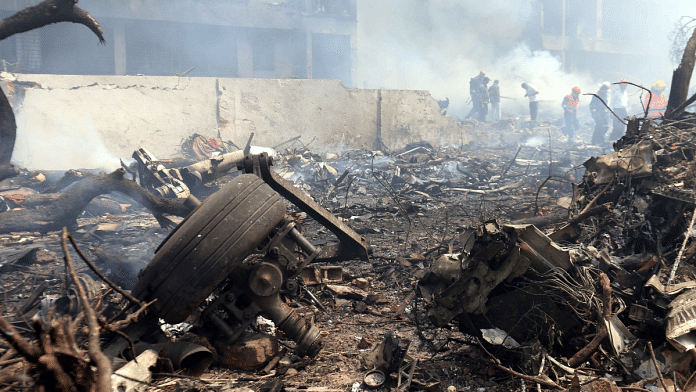Both Boeing and Air India have a number of questions to answer while speculations continue to swirl. As for Air India, which is in the midst of rebuilding its brand to regain its top spot in Indian aviation, this crash is a major setback. The crash is likely to send aviation planners back to the drawing board and strengthen systems. And that is why the Ahmedabad crash is ThePrint’s Newsmaker of the Week.
A clear understanding of what the pilots faced in those final moments will only emerge after a comprehensive global investigation involving multiple stakeholders, and analysis of the black box, including the Cockpit Voice Recorder (CVR) and the Digital Flight Data Recorder (DFDR).
Experts have floated multiple theories behind the crash, including a rarest of rare double–engine failure, complete electrical failure, bird hits, faulty takeoff configuration, flap lockout due to failed hydraulics or human error, and the soaring temperatures of Ahmedabad. Speculations and conspiracy theories around sabotage abound. However, Home Minister Amit Shah has termed the crash as an accident.
Aviation expert Mark Martin pointed out that the safety of an airport extends beyond its perimeter. He said that if the Sardar Vallabhbhai Patel International Airport were located away from densely populated areas, pilots might have had room to attempt an emergency landing, increasing the chances of survival. Martin stressed that the government must now enforce accountability and ensure no safety protocols are bypassed.
Before its ill-fated London leg, the Air India flight had completed a Delhi–Ahmedabad run. According to former pilot and instructor SK Pillai, standard protocols mandate thorough system checks between flights, all of which are documented. Pilots also perform routine pre-flight inspections before accepting the aircraft.
A thorough analysis of all this, along with that of the black box recordings and aircraft remnants, will tell us, if not the whole, some key parts of the story.
The crash has once again brought Boeing under scrutiny, reviving long-standing concerns about quality control, structural integrity, and manufacturing standards.
While this is the 787 Dreamliner’s first fatal crash, considered an advanced passenger aircraft, often termed as the “best-selling passenger plane”, it isn’t the variant’s first brush with safety. In the past, since its launch in 2009, over 100 have been recorded.
Moreover, concerns have been raised about the safety issues with the 787 series even as Boeing continues to face multiple US Federal Aviation Administration (FAA) investigations. On 11 March 2024, 50 passengers were injured after a Boeing 787-9 Dreamliner, operated by LATAM Airlines, suffered an abrupt mid-air drop while heading from Sydney to Auckland.
Boeing has also faced intense international criticism following the deadly crashes of its 737 MAX aircraft in 2018 and 2019, which claimed about 350 lives. The company came under renewed pressure in January 2024 after a door plug blew off mid-air on a 737 MAX 9 operated by Alaska Airlines.
These events involving Boeing are examined in Rory Kennedy’s 2022 Netflix documentary Downfall: The Case Against Boeing, which delved into the crashes, dissecting potential causes.
Subsequent investigations revealed several critical issues, including faults in the Maneuvering Characteristics Augmentation System (MCA), insufficient pilot training, and significant lapses in regulatory oversight.
Over time, whistleblowers have raised concerns over the aircraft manufacturer not maintaining standards and failing oxygen systems including at the Boeing North Charleston factory in South Carolina, the site of the 787 series production. In the last decade, the Boeing company, across its various civilian aircraft, has seen multiple incidents that have impacted hundreds of families across the globe.
Each aviation accident leaves grieving families seeking answers, while also raising critical questions for aircraft manufacturers, airline operators, and other key stakeholders in the aviation industry. Understanding what exactly transpired on the tragic Thursday may help correct errors or assign some accountability, though investigations into airline crashes don’t always yield definitive answers. The world is still searching for MH370.
As for the families of the crash victims, for now, each moment waiting to get the bodies of their loved ones is further deepening their agony. The devastating impact of the crash left many bodies badly charred, making DNA identification painstakingly slow.
(Edited by Aamaan Alam Khan)







